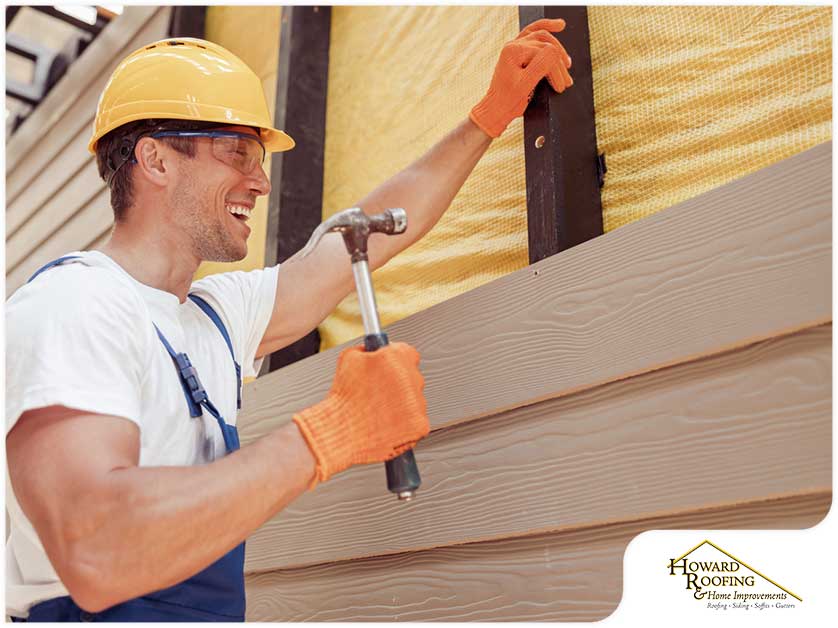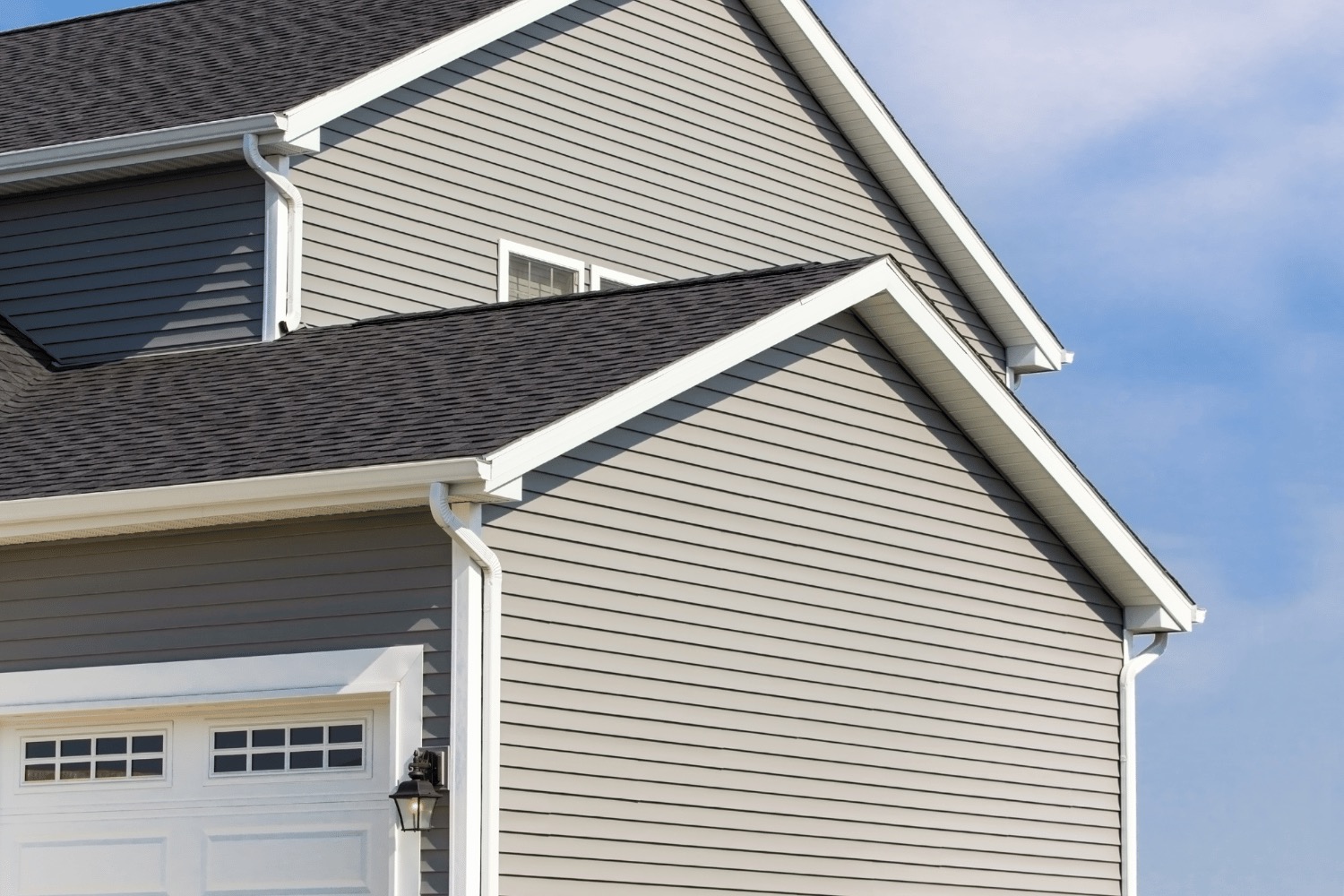The Necessary Overview to the Various Sorts Of Siding and Their Special Benefits
In the realm of home enhancement, picking the ideal siding is a critical decision that influences both aesthetic charm and practical performance. The selection of materials readily available, such as wood, plastic, fiber brick, concrete, and steel, each offer unique benefits that accommodate different demands and choices. Recognizing these differences can dramatically improve the durability and value of a building - morris siding contractor. However, with numerous alternatives to take into consideration, which siding product genuinely attracts attention for your specific project? Exploring these options can cause notified choices that line up with both style and functionality.
Wood Exterior Siding
Timber house siding, a preferred selection for property exteriors, offers a timeless aesthetic that integrates natural elegance with architectural stability. This siding product is offered in numerous designs, consisting of clapboard, roof shingles, and board-and-batten, permitting property owners to tailor their appearance to match their design choices. Timber exterior siding is typically crafted from durable types such as cedar, redwood, or want, which are recognized for their durability and capability to endure ecological stress factors.
One of the primary benefits of timber siding is its superb insulation homes, which can add to energy efficiency and reduced home heating prices. Additionally, timber siding is biodegradable, making it an ecologically friendly choice when sourced sustainably. Routine maintenance, consisting of paint or discoloration, can lengthen its life-span and boost its appearance, permitting property owners to preserve the all-natural charm of the wood.
Nevertheless, potential drawbacks include sensitivity to insects, rot, and climate damage, requiring ample treatment and maintenance - morris siding contractor. Regardless of these problems, when properly taken care of, wood home siding can give a long lasting and attractive solution that enhances the character of a home while using a cozy, inviting environment

Plastic Home Siding
Vinyl home siding has become a leading choice for home owners seeking a low-maintenance exterior choice that incorporates toughness and cost. This functional material is crafted from polyvinyl chloride (PVC), making it immune to various climate condition, including dampness and UV rays. As a result, plastic siding does not warp, rot, or discolor, ensuring resilient aesthetic allure.
One of the main advantages of vinyl home siding is its extensive range of colors and designs, allowing property owners to achieve the desired search for their home without the demand for frequent repainting. Furthermore, plastic house siding is very easy to install, which can substantially lower labor costs throughout building and construction or remodelling projects.
Plastic house siding additionally adds to energy effectiveness. Lots of alternatives feature insulation backing, which boosts thermal performance, helping to maintain comfortable indoor temperature levels and possibly decreasing power costs. Additionally, its smooth surface helps with simple cleaning, requiring only periodic washing with a garden hose pipe to remove dirt and debris.
Fiber Concrete House Siding
Fiber concrete house siding has actually obtained grip among house owners and building contractors alike due to its remarkable mix of durability and visual convenience. Composed of a blend of sand, cement, and cellulose fibers, this house siding alternative is engineered to hold up against extreme climate condition, including high winds, heavy rainfall, and temperature fluctuations, making article it a long-lasting selection for property outsides.

One of the main benefits of fiber concrete home siding is its resistance to parasites, such as termites, and its non-combustible nature, offering improved fire safety. morris siding contractor. Furthermore, it is available in a large array of colors, styles, and appearances, allowing house owners to achieve their wanted visual without sacrificing performance
An additional advantage is its low upkeep needs; fiber cement home siding commonly requires painting or staining every 5-10 years, which is less constant than various other products. Additionally, its durability adds to a reduced overall expense of possession, as it reduces the demand for frequent repair work or replacements.
Inevitably, fiber concrete exterior siding represents a superb financial investment for those looking for a resistant, eye-catching, and versatile outside alternative, incorporating both kind and feature to enhance the home's curb appeal.
Metal Siding
The allure of metal home siding hinges on its durable sturdiness and contemporary aesthetic appeal, making it a popular selection for modern design. Offered in products such as aluminum and steel, metal house siding supplies a variety of surfaces and colors, allowing home owners to attain a tailored appearance that complements their style vision.

Power effectiveness is an additional considerable advantage, as numerous metal siding items are developed with insulation options that help regulate interior temperature levels. This can lead to minimized energy expenses gradually. Additionally, steel siding is usually recyclable, making it an ecologically friendly selection for sustainability-minded homeowners.
The installation procedure for steel home siding can be relatively simple, causing a quicker turn-around time for building projects. Overall, steel home siding incorporates functionality and design, making it a sensible choice for those seeking a aesthetically enticing and enduring exterior coating.
Brick and Rock House Siding
Brick and stone siding stands out as a classic option that enhances the visual charm of any kind of home. Understood for their toughness and low upkeep, these products provide an extraordinary roi while boosting the building's visual appeal. Offered in various shades, textures, and patterns, block and stone can be tailored to fit diverse architectural designs, from conventional to modern-day.
One of the main benefits of brick and stone home siding is their energy efficiency. Both this article products possess all-natural insulating residential or commercial properties that assist manage indoor temperatures, possibly lowering heating and cooling expenses. Furthermore, they supply superior fire resistance compared to other home siding alternatives, adding to enhanced safety and security.
Another benefit is their longevity. Block and stone can last for decades, commonly requiring minimal upkeep beyond occasional cleansing. Unlike timber house siding, they are unsusceptible parasites and rot, ensuring a lasting exterior that endures the aspects.
Final Thought
In summary, the selection of house siding dramatically affects a home's visual charm, energy effectiveness, and maintenance demands. Each type of house siding-- whether wood, plastic, fiber concrete, brick, or steel and rock-- supplies distinct advantages tailored to numerous homeowner choices and environmental conditions.
One of the key advantages of wood house siding is its superb insulation homes, which can add to energy effectiveness and lower home heating prices. Additionally, timber siding is naturally degradable, making it an eco friendly alternative when sourced sustainably.One of the primary advantages of steel siding is click reference its resistance to different ecological aspects.Power performance is another significant benefit, as several steel siding products are developed with insulation alternatives that aid regulate indoor temperatures. Each type of house siding-- whether wood, vinyl, fiber cement, block, or metal and stone-- offers distinct benefits tailored to various property owner preferences and ecological problems.